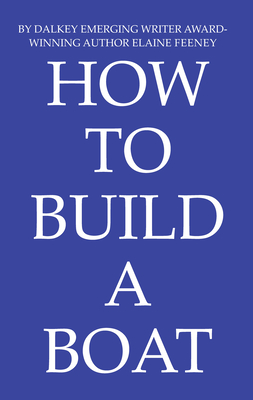What do you think?
Rate this book


304 pages, Paperback
First published April 20, 2023
The currach’s skeleton of sally and hazel rods is in the middle of the workshop floor and it really does look alive, and the centre laths makes it look like a boat now, I will admit this, and I admit to feelings of excitement just looking at it, maybe a mixture of nerves and excitement, which are perhaps the same thing, and the vast expanse, all the huge space its frame is taking up,
it’s greater than all of us.
The cathedral bell rang out fast.
Bell | bang | bell | bang
Half past the hour.
It knocked a start out of Jamie who was stood in line behind other boys in blazers and school bags clasped to them. A few leaves whipped up in the rusty gulley at the entrance and a bird perched on the head of a marble statue. A full-sized laminated picture of Jesus was nailed to the main door, his heart plucked out of his chest and rainbow shards of light shooting from him. This was new and it threw Jamie. He memorised it for tomorrow. Eoin warned him that there could be new things. He said not to panic if this happens. But Jamie preferred when Eoin said nothing. Saying not to panic was like telling him not to think of an elephant in a tutu.
Stood there, Tess thought about Tadhg walking out to the Forge, alone, about Jamie and his machine, about how fulfilled she was being among them and how naively Jamie was hoping, the bright hope he had, that the energy, wherever it would manifest from, would be enough to connect everyone, the living and the dead. But there was nothing for the half-living, Tess thought —
Nothing at all for the dead walking among them.
How can I miss someone I have never met? Jamie said.
Grief was profoundly different for both humans. One felt an intense anger he had never recovered from, the other knew something was missing, a vacuum to where a mother should fit, and he had a fixed determination to fill it.
Jamie got it. He just didn't want to get it. Noelle had never stopped moving from the first minute he had met her on screen. She was in constant and limited motion.
There had been hundreds of clips. Noelle laughing after school. Noelle walking in the woods. Noelle soaked to the skin on a picnic. Noelle pulling faces outside the cinema. Noelle painted like a Dalmatian at Halloween with a black-and-white hair wig. But after a rare night out with the soccer club, Eoin, angry and lonely and drunk in his small, dark living room, deleted the phone's contents. After which, he placed his phone on the laminate floor of the two-up-two-down and smashed it hard under the heel of his foot. After which, he vomited. After which, he passed out until morning when he woke frantic and pacing about with a dry mouth and a pounding headache, and in a lather of sweat and overwhelmed with the desire to disappear. But Jamie woke, crept downstairs and began asking so many questions that Eoin had no choice but to recover and get on with the getting on a young boy requires. And for years after, Eoin replayed each deleted clip in his mind before he'd fall into a fretful sleep, until the clips grew so hazy and faint and there came a time when Eoin couldn't visualise Noelle's face at all,
and though he tried to (re)build it:
smile, red hair, eyes, freckled nose, wide shoulders
parts of her vanished until it was finally i,possible to recreate her.
They were almost a decade married now and to avoid misinterpretations in the way they communicated, they had grown polite and consistent with each other. To Tess, it was as though she had catapulted. She stopped giving Paul her point of view. And Paul stopped worrying about what ailed Tess.